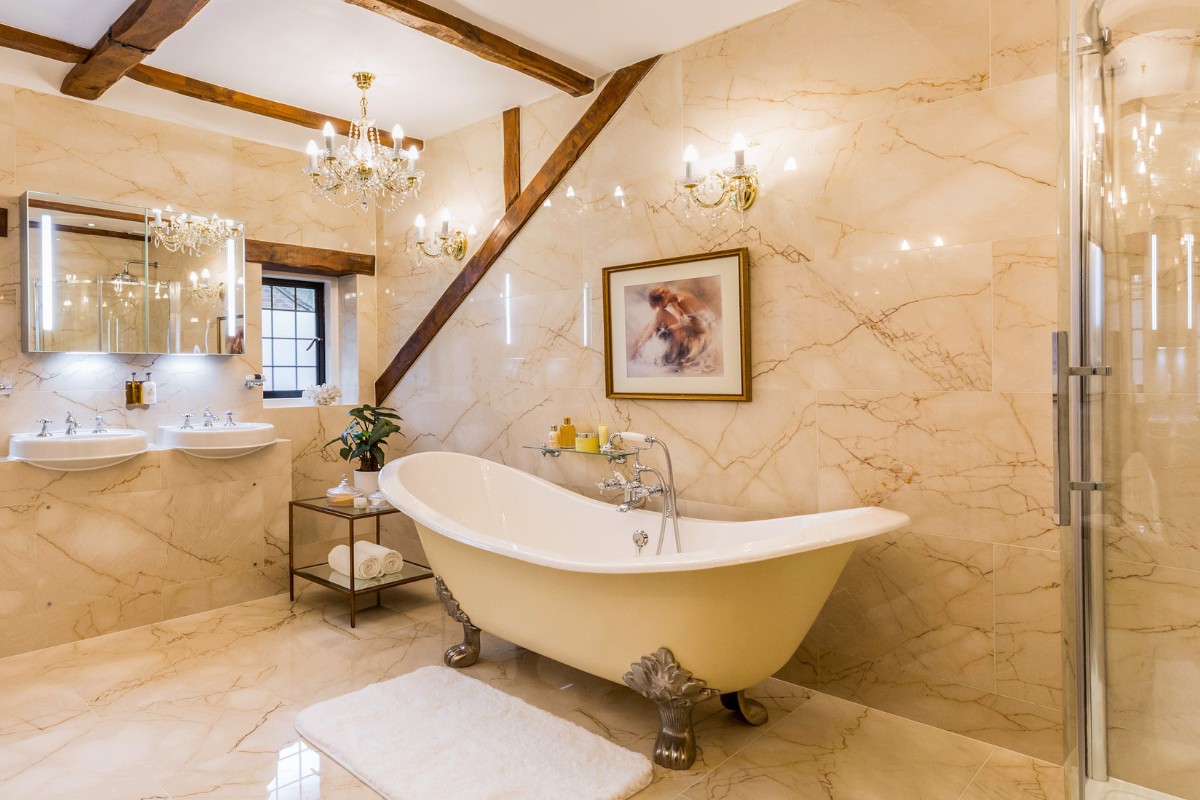 25th April 2025 | IN DESIGN ADVICE | BY SBID
25th April 2025 | IN DESIGN ADVICE | BY SBIDHaving natural stone in a bathroom is one way to add a touch of luxury to your home. The earthy tones of limestone can recreate a spa-like experience or the bold colours of marble elevate a space with a hint of grandeur.
No matter what materials you use in a wet environment, regular maintenance will always be necessary. The grout of a porcelain tile, for example, will become discoloured easily if you don’t keep on top of the cleaning. A little more time investment might be needed to care for natural stone, but having to do this means that you’ll not neglect the tiles as is so easily done with a ‘low-maintenance’ surface.

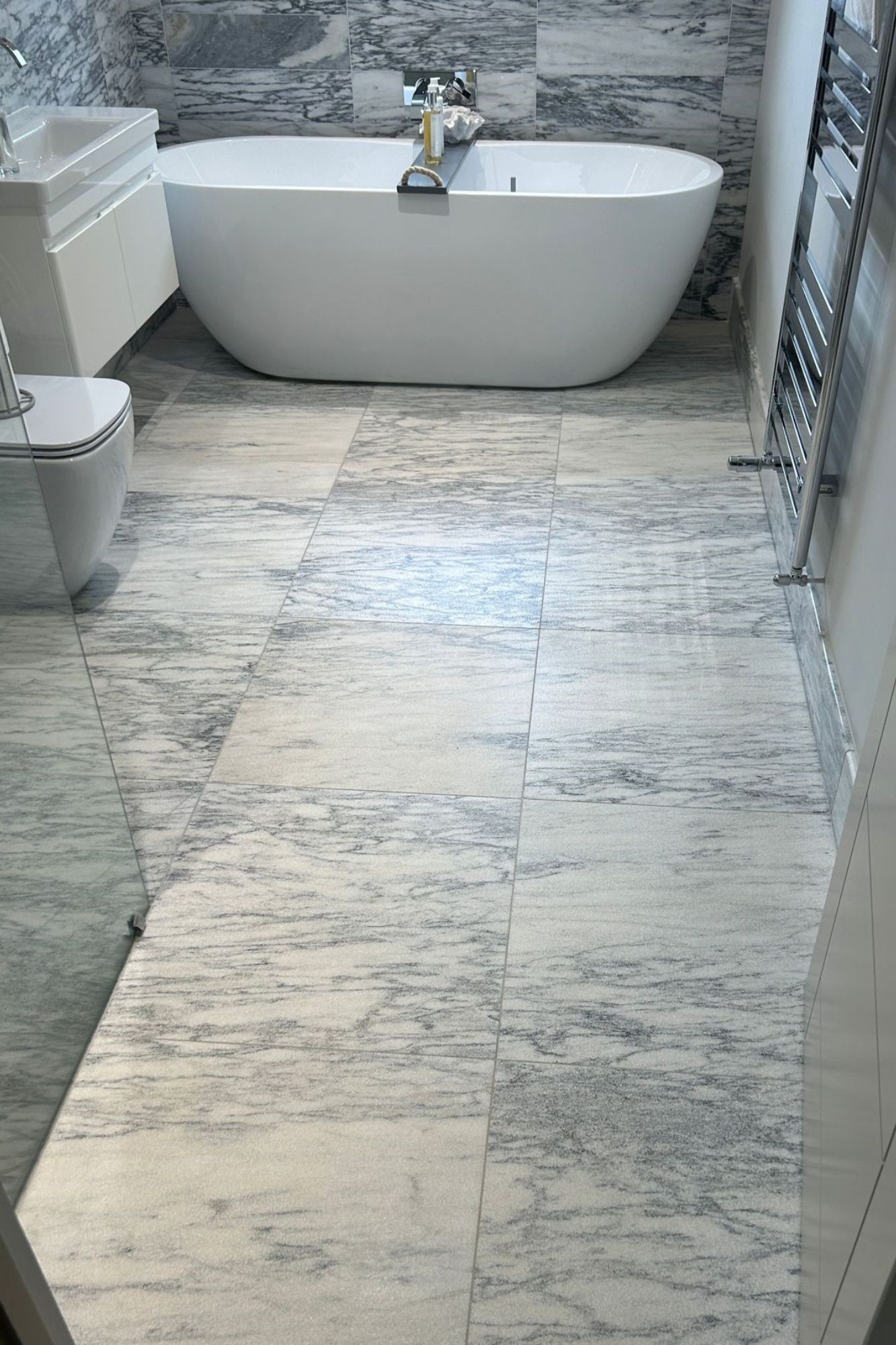
Stone Selection
As with any room that you are considering installing natural stone in, there’s stone types that are more suitable and usually this is down to reducing the required maintenance.
Marble installed in a bathroom should ideally be the highest grade possible for the minimal inclusions and veining. This is because the vein composition is vulnerable to moisture damage. Very light, white marble can also be subjected to discoloration over time due to its naturally occurring iron content rusting. On the contrary, dark marbles will show the etch marks and hard water deposits very easily and so do require a diligent approach to maintenance.
It is important too, if considering limestone or travertine to opt for a less porous type. Stone suppliers should be able to talk you through the options with the lowest water absorption rate.
After selecting the stone type, particular attention should be paid to the finish on the stone, size of tile and other factors that will impact the slipperiness of the surface if being installed on a bathroom floor.
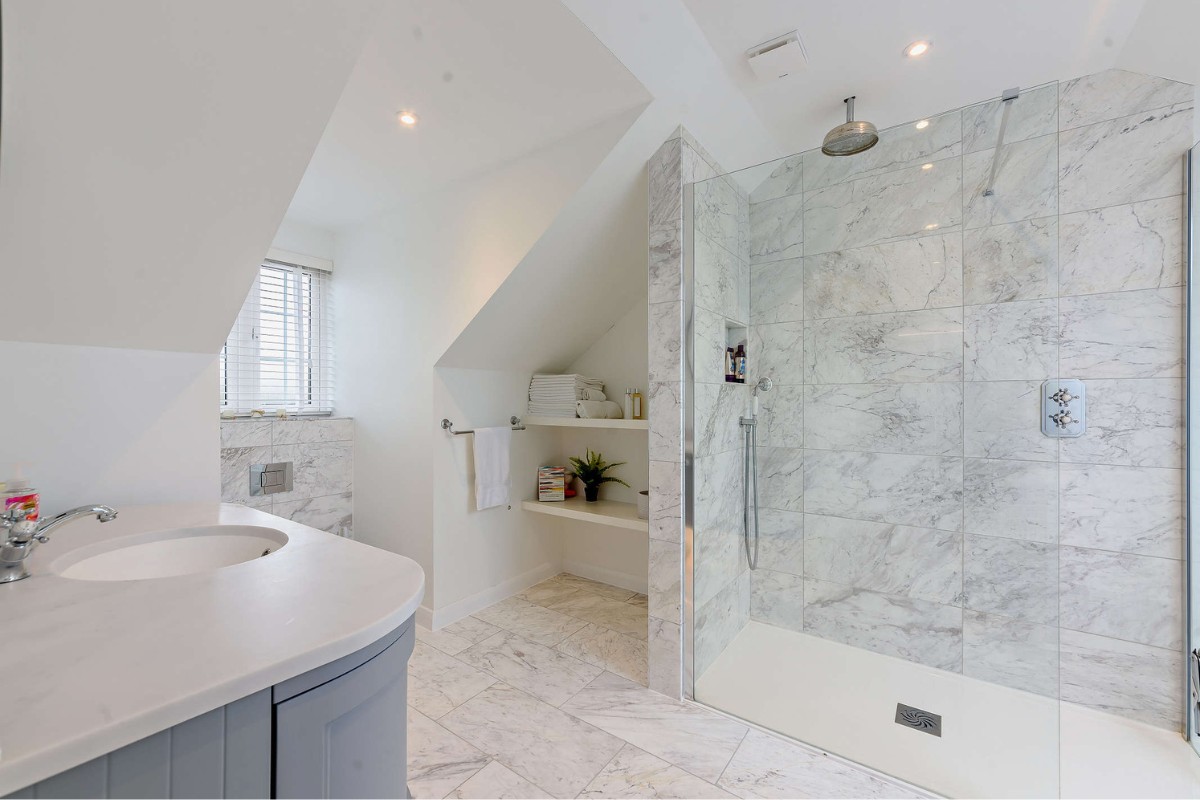
Daily Habits
We recommend that you clean your stone shower and bath area daily. The easiest and most effective way is to spray the walls and floor of the stall with a stone safe cleaner, then squeegee down after everybody in the home has taken a shower for the day. This will stop hard water build ups to the surface of the stone.
This is particularly pertinent when it comes to Marble which is acid sensitive. With strong acids, you will see the effects of this instantly with a white or dull burn mark showing almost instantly. Known as etching, this is not something that can be wiped or cleaned off and will require professional restoration.
Tap water is not always PH neutral which means that over time, this can have a similar effect on your stone. In a marble bathroom, this means that it is really important to keep the surfaces as dry as possible.
In hard water areas (like London and the South East), sitting water will also lead to a build-up of limescale and mineral deposits which can be tricky to remove without risking damage to the stone surface.

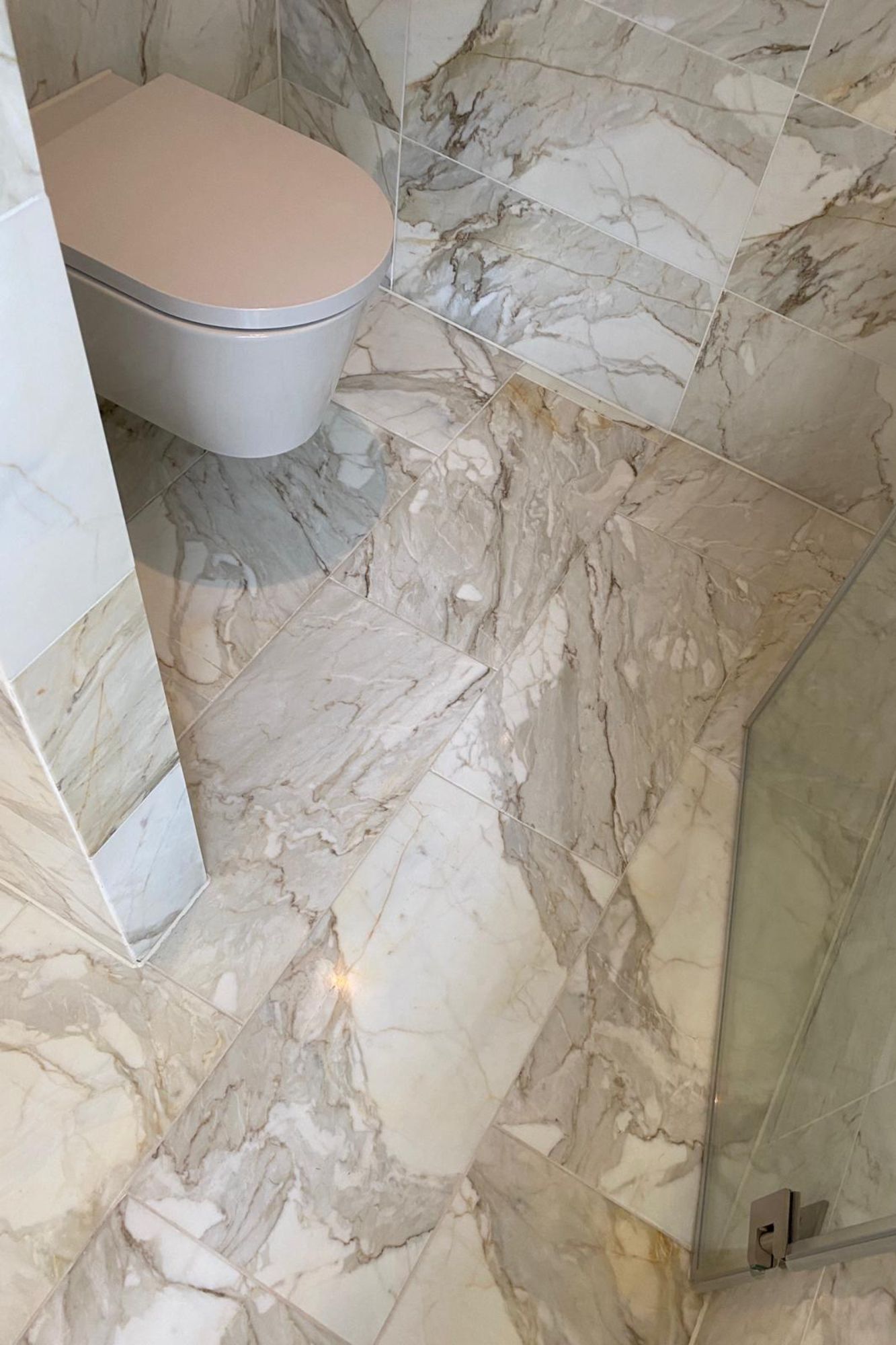
Stone Safe Cleaning
When it comes to cleaning the stone in your bathroom it is essential to use a pH neutral stone cleaner. If in doubt, look out for ‘stone-safe’ on the label.
We also recommend keeping this in mind when cleaning other areas of your bathroom. Try using alcohol to clean your windows and mirrors rather than harsher acidic-based cleaning chemicals. If using bleach for your toilet then it is worth taking a little more time to protect any surrounding stone too.
Don’t let metal bathroom accessories (toilet brush holder, toilet paper stand etc) sit directly on the stone floor. Moisture, even from steam condensation will pool around the bases and can cause unsightly and difficult-to-remove rust marks in the stone.
It is also very important to keep an eye on grout and particularly silicone throughout the bathroom. Not only will worn grout look unsightly, but water that gets behind the stone can cause damage beyond repair.
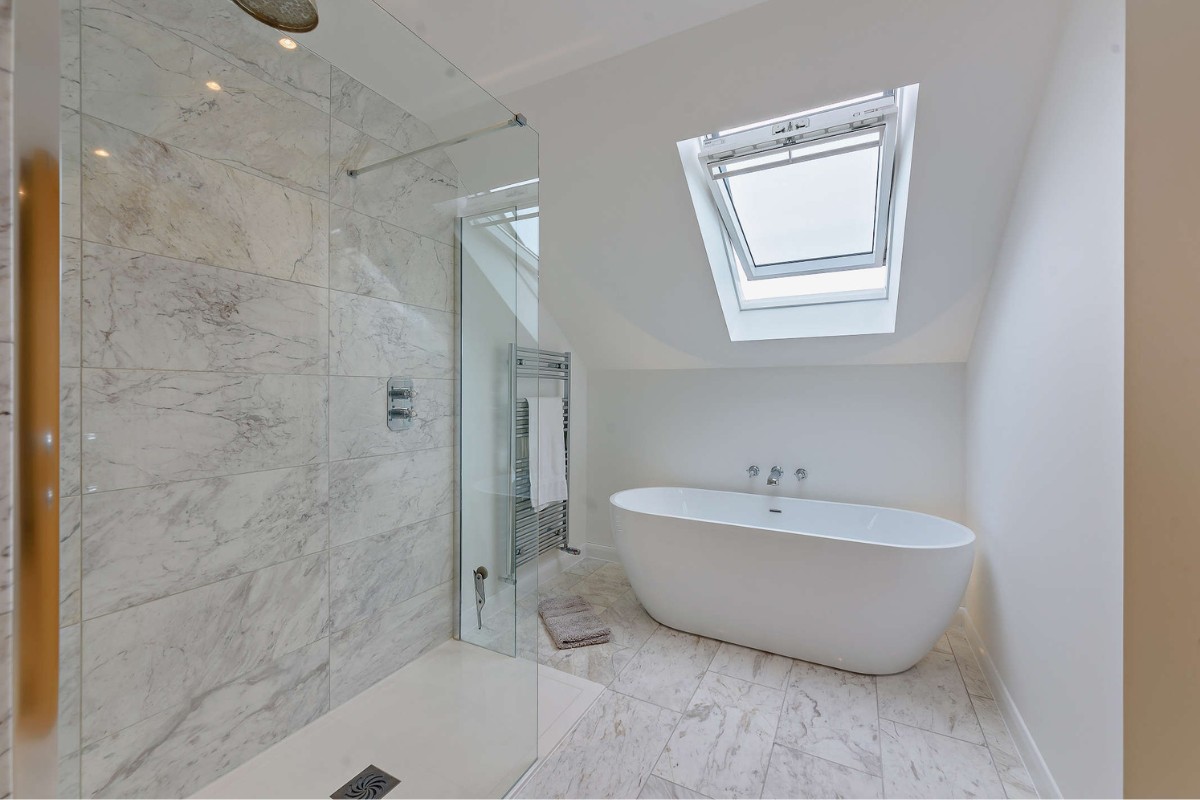
Sealing Stone
Although stone will have been sealed when installed, it is important to note that this will not prevent the damage that acids and hard water can do over time. Periodic reapplication of a sealant can help to maintain the aesthetics as well as topping up the protection.
Just pour a small amount onto a microfibre cloth and apply to the stone surface in small circles until you have covered the area. Then buff the stone with a fresh cloth to remove any excess. Leave this for at least 15 minutes to dry, ideally 24 hours if possible.
If you opt to have your stone professionally restored or cleaned, the application of a sealant will always be included as part of the treatment.
For more information on how to look after stone in a bathroom or for you free copy of Athena Aftercare to share with clients please email info@athenastonecare.co.uk
About Athena Stonecare
Natural stone is an investment and we are committed to ensuring that its beauty endures. We specialise in working with marble, limestone, travertine, granite, and all types of natural stone, ensuring that stone will continue to be a beautifully sustainable feature within any property. As natural stone restoration experts we work with floors, worktops, shower walls, sinks and vanity units. The ongoing care of stone is important to us too and so we have developed a suite of advice and guidance on how to maintain the finish of any stone surface. This is distributed through stone suppliers across the UK and is also available to anyone who works with natural stone.
If you’d like to feature your news or stories on SBID.org, get in touch to find out more.
If you’d like to become SBID Accredited, click here for more information.



